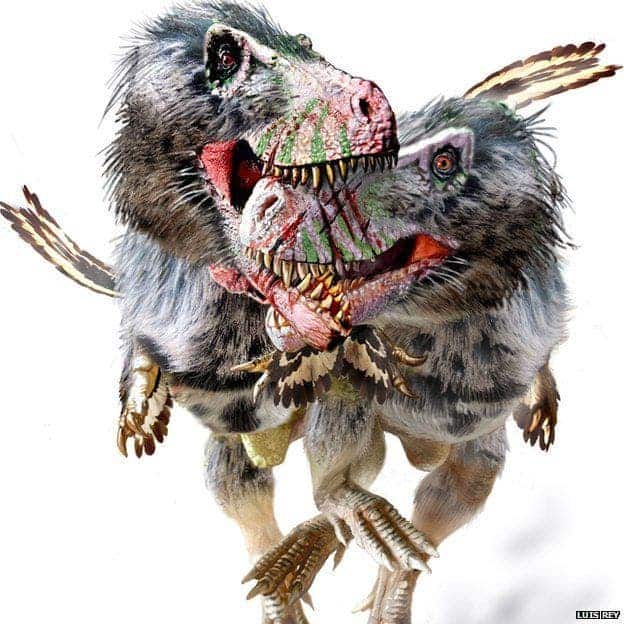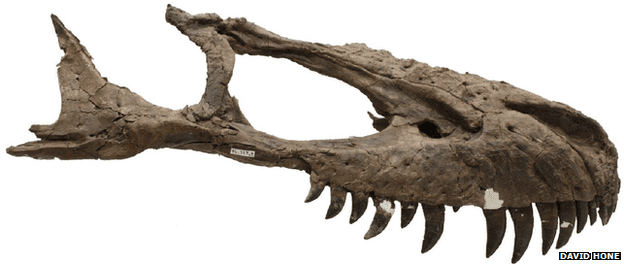When tyrannosaurs ruled the world, no one was safe from them – not even other tyrannosaurs. The skull of an unfortunate adolescent tyrannosaur shows signs of brutal fight; the individual was defeated and then eaten by members of its own species, new research shows.

“This animal clearly had a tough life, suffering numerous injuries across the head including some that must have been quite nasty,” said lead author Dr David Hone from Queen Mary, University of London. “The most likely candidate to have done this is another member of the same species, suggesting some serious fights between these animals during their lives.”
It’s not the first time it was suggested that tyrannosaurs were cannibals – in 2010, a study published in PLoS found that no other than T-Rex was a cannibal, while another related dinosaur, Majungasaurus also exhibited cannibalistic behavior. When you have a hammer, everything might seem like a nail to you – when you’re a huge tyrannosaur on top of the food chain, everything looks like a potential meal.
The unfortunate beast found by paleontologists measured about six metres long and its remains were found in a quarry in Alberta, Canada, in 1994. Researchers studied its skull and found numerous injuries, many of which came from bites. There is even a circular, tooth-shaped puncture hole in the back of the head from a particularly savage bite. The creature was bitten even after it was killed, as it was decaying.

It’s hard to say for sure, but it does seem that Tyrannosaurs had a thing for eating each other.
“It is not possible to distinguish easily between cannibalism and feeding by another tyrannosaurid,” the researchers write.
Journal Reference: DWE Hone, DH Tanke. Pre- and postmortem tyrannosaurid bite marks on the remains of Daspletosaurus (Tyrannosaurinae: Theropoda) from Dinosaur Provincial Park, Alberta, Canada. https://dx.doi.org/10.7717/peerj.885






